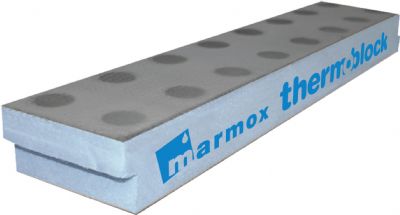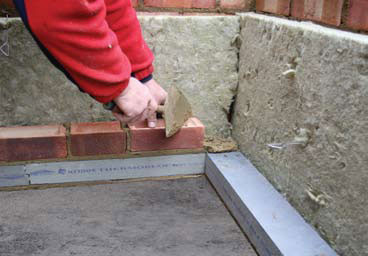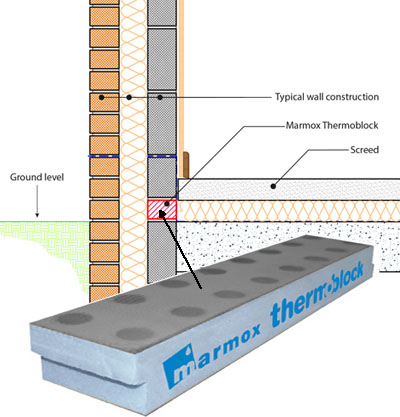Marmox Thermoblock Properties and Characteristics

Building Materials for Efficient Insulation
When talking about insulation, people usually think of traditional insulation materials which are added to their roof, walls, or floors during construction or refurbishment of their household. However, what usually does not come to mind is the fact that there are many other innovative building materials that can have the same purpose and only upgrade the insulation you are planning on installing. One such product is Marmox Thermoblock which has thermal insulation and moisture resistance properties and can significantly improve insulation of your exterior wall. It presents a great alternative to traditional construction materials, why it will be thoroughly discussed right here.
Marmox Thermoblock Basics
Marmox Thermoblock is a lightweight yet strong, load-bearing block made from fire-resistant extruded polystyrene integrated with a rigid concrete frame, usually installed at the bottom of the interior leaf of the exterior wall. It is available in standard 65mm x 600mm dimensions and 100mm and 140mm thicknesses, designed for typical UK brick height, whereas in case additional thickness is required, it can be laid in two rows at the base of the wall. The main purpose of Thermoblock is to reduce the heat flux through the wall and floor junctions and thus minimize the risk of thermal bridging from appearing.
Namely, the studies have shown that approximately 30% of overall heat loss is caused by thermal bridging, why this issue needs to be dealt in due time. Basically, thermal bridge is a path that is created when two materials with different levels of thermal conductivities adjoin, where wall and floor junctions are a perfect example. When this happens, the heat that is supposed to stay within the structure escapes out, thus affecting the thermal regulation of the wall. Well, when the blocks are laid at the base of the wall, between these materials with different thermal conductivities, they prevent this from happening, thus acting as a thermal barrier. Another thing that we would like to point out is that, although very lightweight, the blocks have significant comprehensive strength and are able to withstand load of at least two storey building.

Thermoblock is most commonly used at the bottom of the inner leaf of an exterior wall, but also has many other applications including solid and party walls, outer leaves, beneath door and window frames, at floor and wall junctions and other areas where thermal bridging can be a problem. However, although the blocks possess a level of moisture resistance, they should not be used as an alternative to damp proof courses, but can only be used to improve the water tightness of the structure. Note that insulation requirements prescribed by the applicable regulation can sometimes lead to increased risk of mould growth, why the insulation needs to be amended and satisfy the set values in regard to the reducing the risk of mould growth. The studies have shown that these blocks can also present a mould growth barrier, which is another significant advantage. Also, the blocks cannot serve as a substitute for aircrete blocks, but can be used in a combination for optimal performance.
Another important aspect of improved energy efficiency which can be achieved with proper insulation and construction materials is the CO2 reduction. Namely, the Code for Sustainable Homes sets certain requirements in regard to the environmental protection and classifies these through different levels, whereas the higher level indicated the greater CO2 reduction. Marmox Thermoblock can easily help the construction reach level 4 of the Code since it can reduce CO2 emissions for 60% to 90% (the level 4 requires at least 44% reduction).

All the above mentioned characteristics and advantages are meant to lead to another thing that we all find very valuable – cost savings. Namely, proper insulation should not only improve the thermal regulation but also help you save some money in the process through lower utility bills, caused by lower energy consumption. What we all expect is for the insulation material installed to pay itself off in some future period. You will notice that this will depend in various factors, such as the very construction of the building, the type of the building, the level of insulation added, air leakage, potential damp and moisture issues etc. Well, under the assumption that all other significant factors are properly taken care of, the approximate payback time if Marmox Thermoblock is install, can vary from two to three years for terraced town house, three to four years for three bedroom semi-detached house and four to five years for four bedroom detached house.
You can now order Marmox Thermoblock right here at Insulation London, contact us through our live chat, call or send an email to info@insulationshop.co.
























































































































